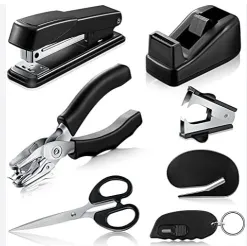Purchaser brings you an extensive range of clamp locking pliers, offering a secure grip and versatile functionality for various applications. Whether you're a professional tradesperson or a DIY enthusiast, having the right tools is crucial for efficiency and precision. In this article, we delve into the world of clamp locking pliers, exploring their features, benefits, and why they're essential for your toolkit.
Understanding Clamp Locking Pliers
Clamp locking pliers, also known as mole grips or Vise-Grips, are versatile hand tools designed for clamping and holding objects securely in place. These tools feature an adjustable jaw mechanism controlled by a screw or lever, allowing users to adjust the clamping pressure as needed.
Types of Clamp Locking Pliers
- Traditional Locking Pliers: These are the standard clamp locking pliers with a straight jaw and adjustable locking mechanism.
- Long-Nose Locking Pliers: Featuring a long, narrow jaw, these pliers are ideal for reaching into tight spaces and gripping small objects.
- C-Clamp Locking Pliers: With a C-shaped jaw, these pliers are perfect for clamping irregularly shaped objects or securing materials to a work surface.
- Swivel-Pad Locking Pliers: Equipped with swiveling pads on the jaws, these pliers provide a secure grip without marring the surface of delicate materials.
Benefits of Clamp Locking Pliers
Clamp locking pliers offer numerous benefits, including:
- Secure Grip: The adjustable locking mechanism ensures a tight and secure grip on objects, preventing slippage or movement.
- Versatility: From clamping pipes to holding materials during welding, clamp locking pliers are versatile tools suitable for various applications.
- Hands-Free Operation: Once clamped, these pliers allow users to work hands-free, increasing productivity and safety.
- Easy Release: Most clamp locking pliers feature a quick-release lever for easy removal and adjustment.
How to Choose the Right Clamp Locking Pliers
When selecting clamp locking pliers, consider the following factors:
- Jaw Size: Choose pliers with jaws that match the size of the objects you'll be gripping.
- Material: Opt for pliers made from durable materials like hardened steel for long-lasting performance.
- Adjustment Mechanism: Select pliers with a smooth and reliable adjustment mechanism for precise clamping control.
- Additional Features: Look for features such as built-in wire cutters or swiveling pads for added versatility.
Maintenance and Care Tips
To ensure the longevity and optimal performance of your clamp locking pliers, follow these maintenance tips:
- Regular Cleaning: Remove dirt, grease, and debris from the jaws and mechanism using a solvent or degreaser.
- Lubrication: Apply a light coat of lubricant to the moving parts to prevent rust and corrosion.
- Storage: Store your pliers in a dry environment to avoid moisture damage and keep them readily accessible for use.
Frequently Asked Questions (FAQs)
How do clamp locking pliers work?
Clamp locking pliers work by clamping onto an object using a locking mechanism controlled by a screw or lever. Once clamped, they securely hold the object in place until released.
Can clamp locking pliers be used as a wrench?
Yes, clamp locking pliers can be used as a makeshift wrench for tightening or loosening nuts and bolts, especially in situations where a traditional wrench is not available.
Are clamp locking pliers suitable for welding applications?
Yes, clamp locking pliers are commonly used in welding applications for holding materials together securely during the welding process.
Can clamp locking pliers damage the surface of delicate materials?
While clamp locking pliers provide a strong grip, the jaws may cause damage to delicate materials. To prevent marring, consider using swivel-pad locking pliers or adding protective pads to the jaws.
Are clamp locking pliers adjustable?
Yes, most clamp locking pliers feature an adjustable screw or lever that allows users to vary the clamping pressure according to their needs.
What is the difference between traditional locking pliers and long-nose locking pliers?
The main difference lies in the shape of the jaws. Traditional locking pliers have straight jaws, while long-nose locking pliers feature a long, narrow jaw for reaching into tight spaces.
Conclusion
Choosing the right clamp locking pliers in Pakistan requires careful consideration of factors such as durability, size, and ergonomics. By understanding the different types available and following best practices for usage, you can ensure efficient and effective results in your projects. Whether you're tackling automotive repairs, plumbing tasks, or woodworking projects, having the right clamp locking pliers can make all the difference. Invest in quality tools from trusted suppliers like Tool Master and take your projects to the next level.


 Login with Google
Login with Google